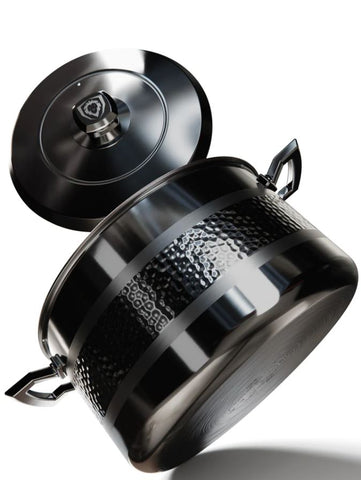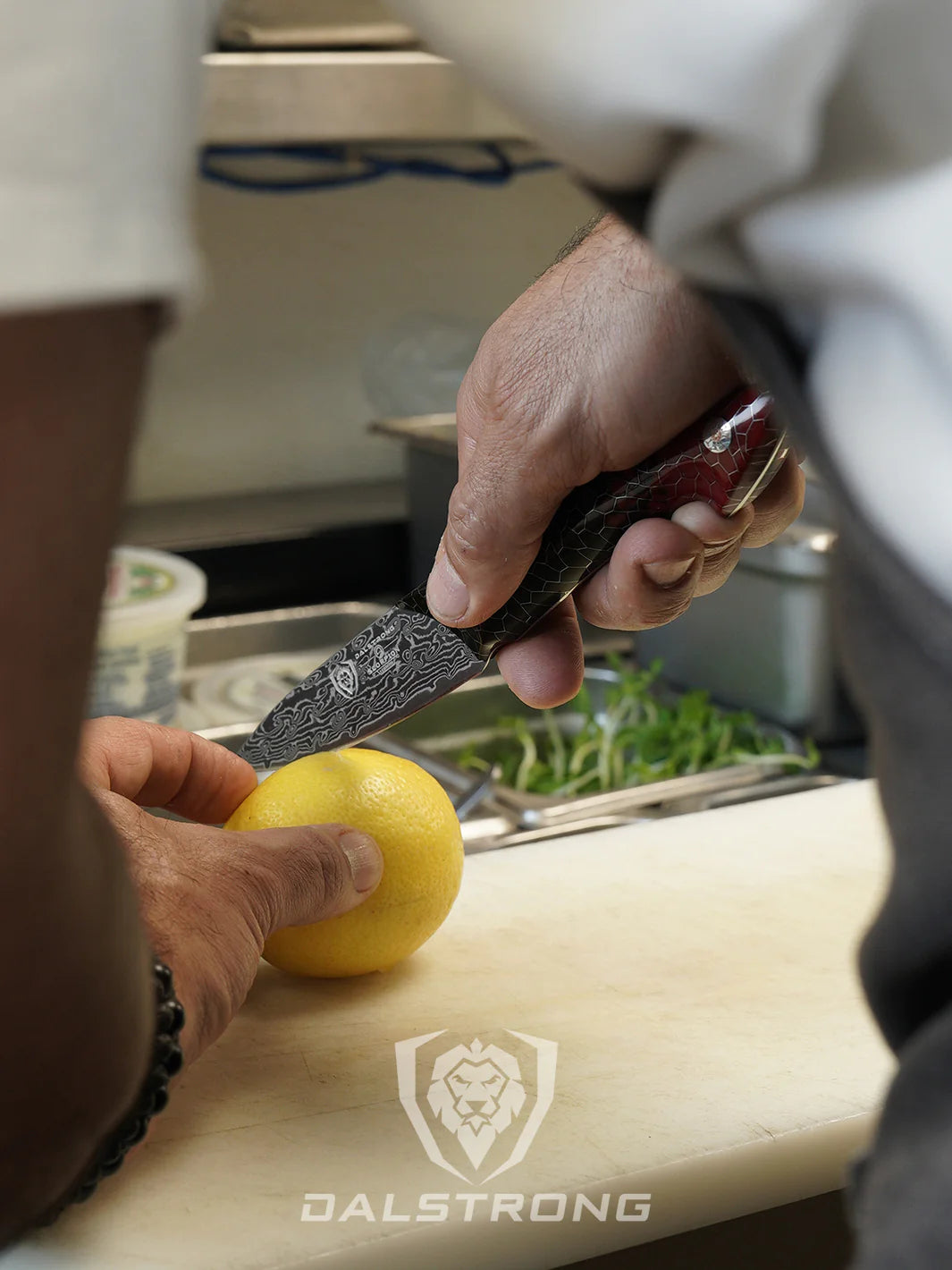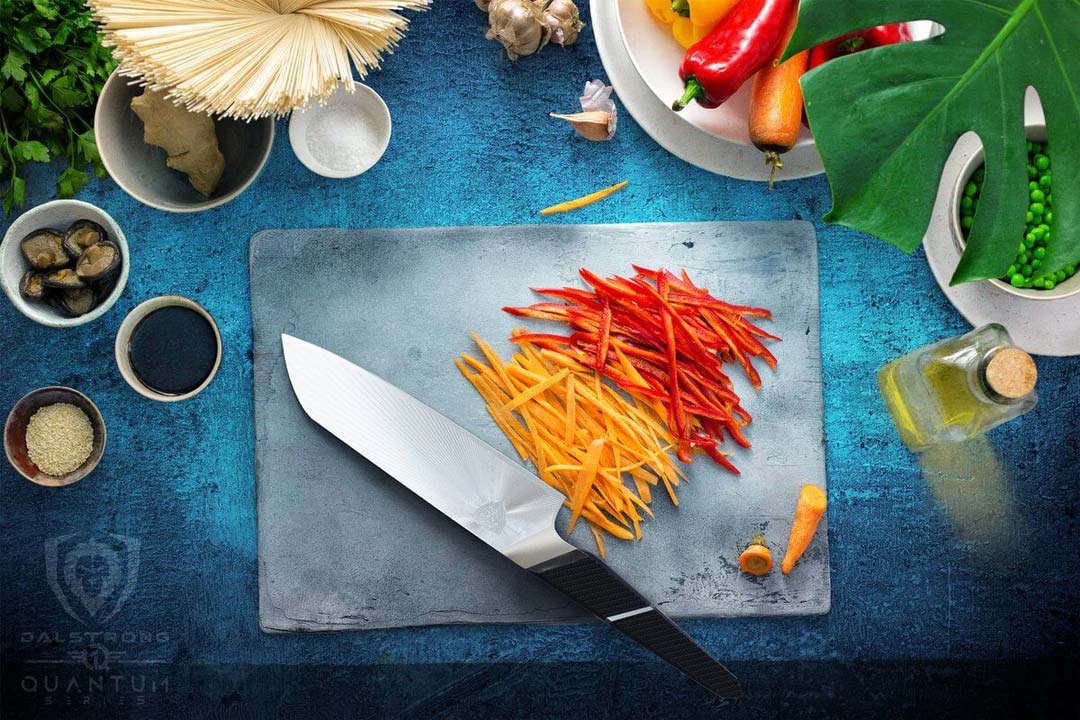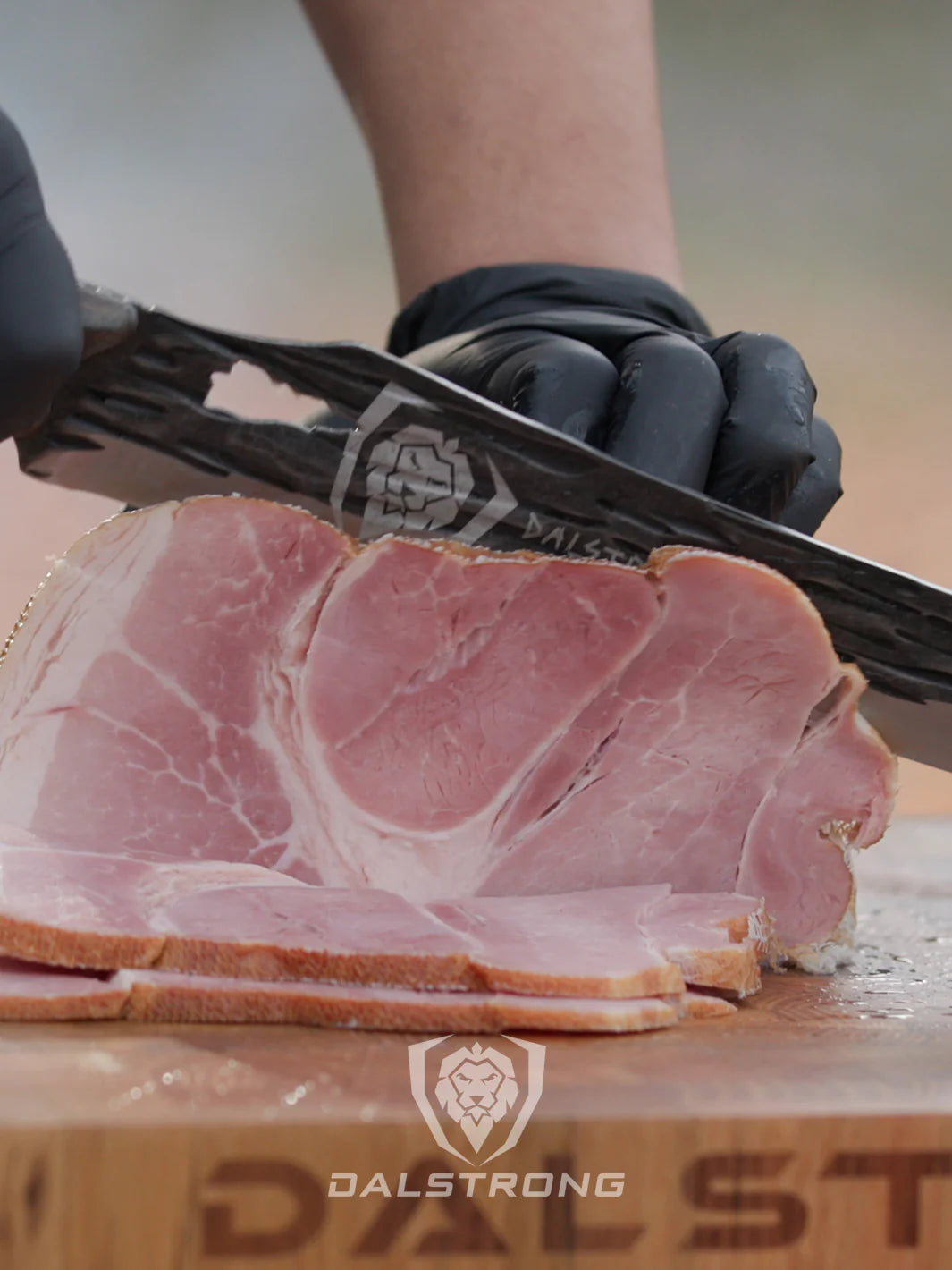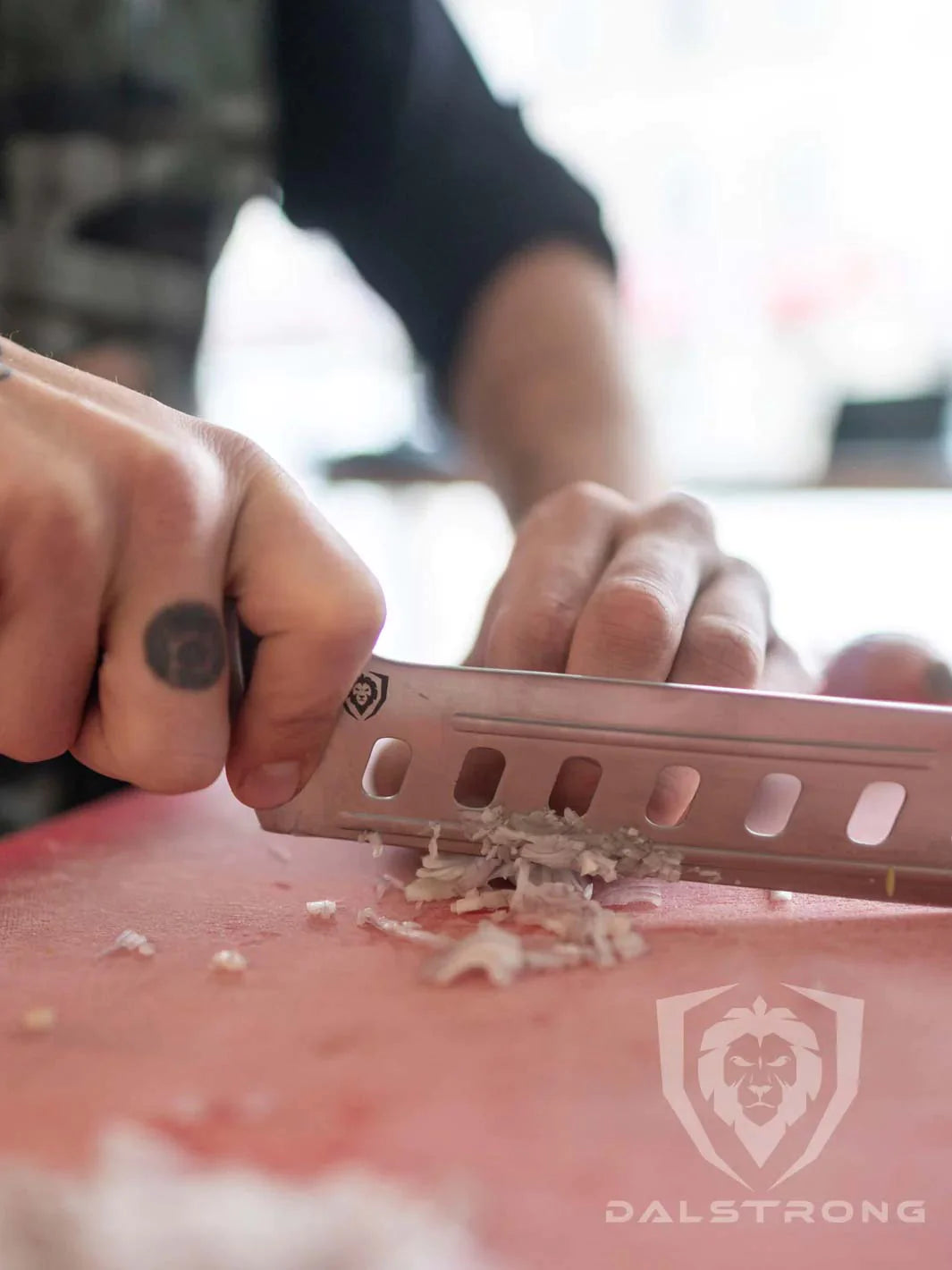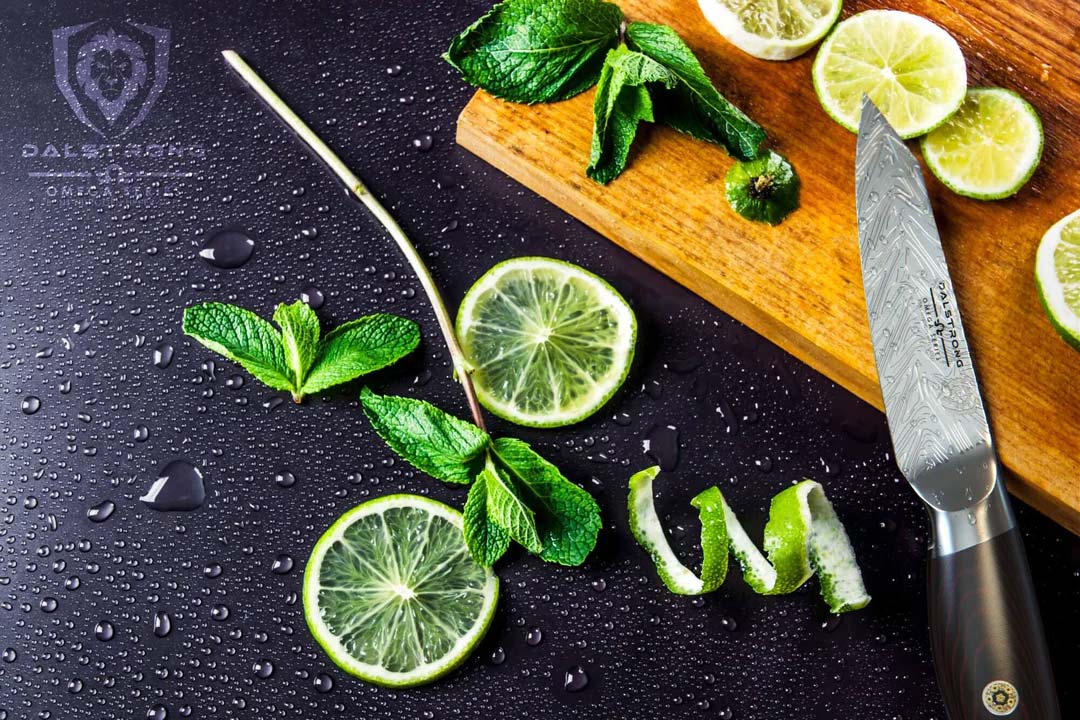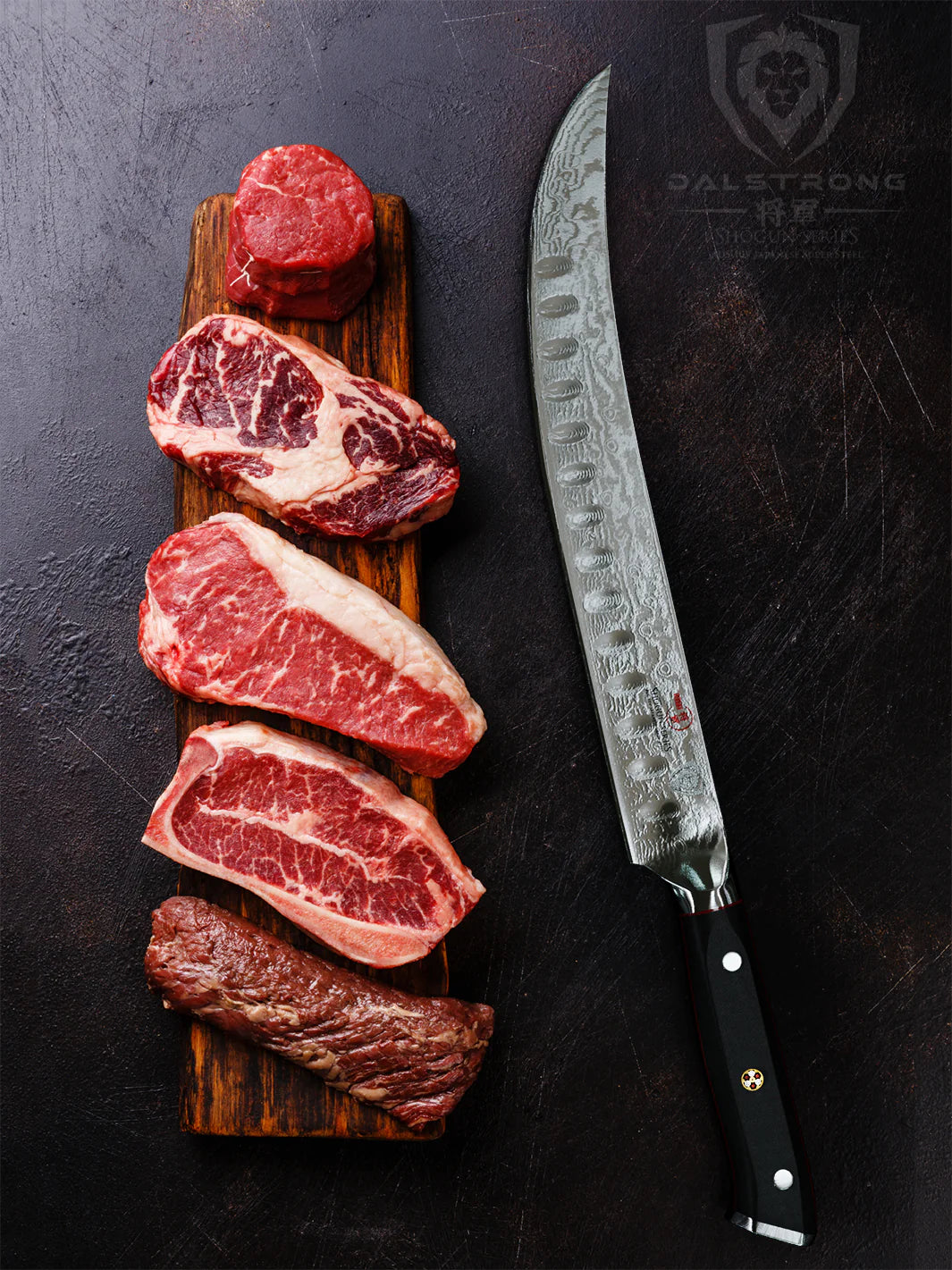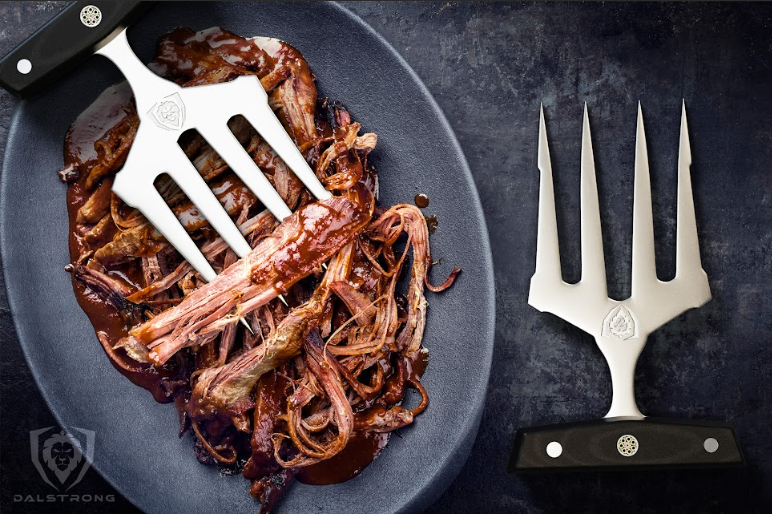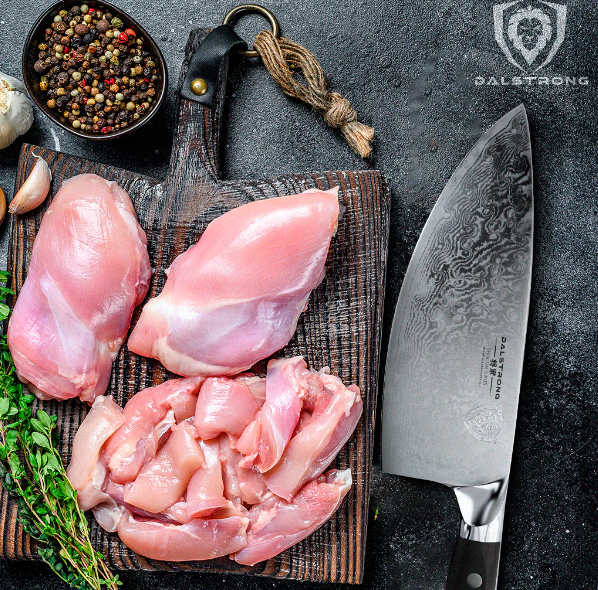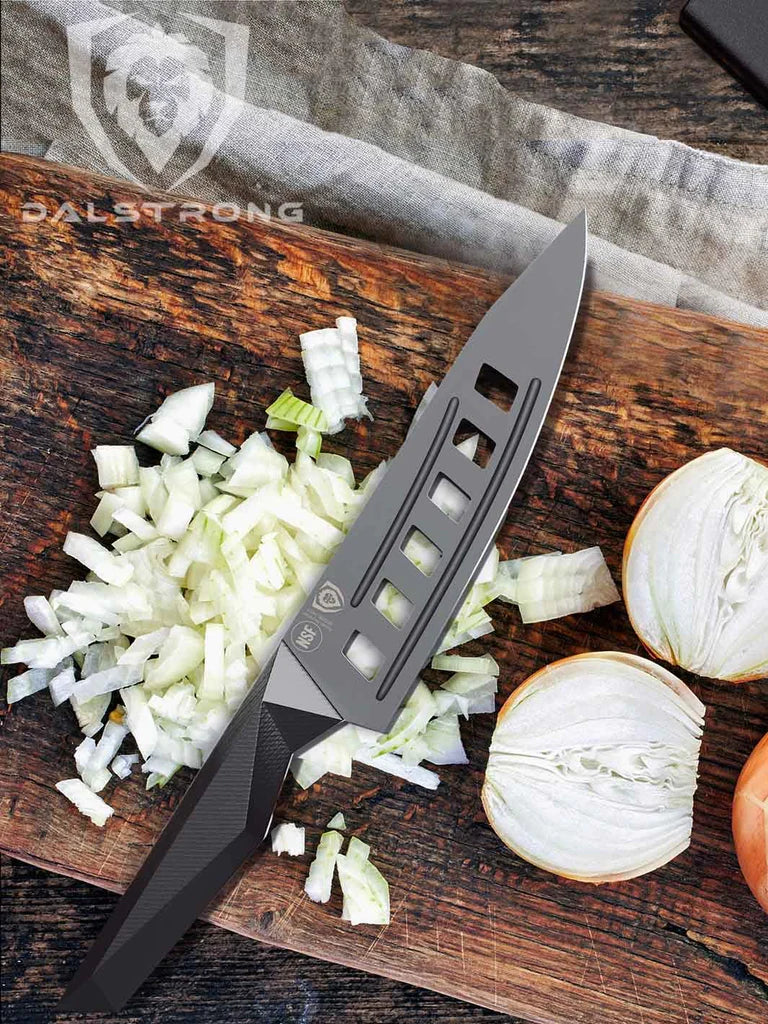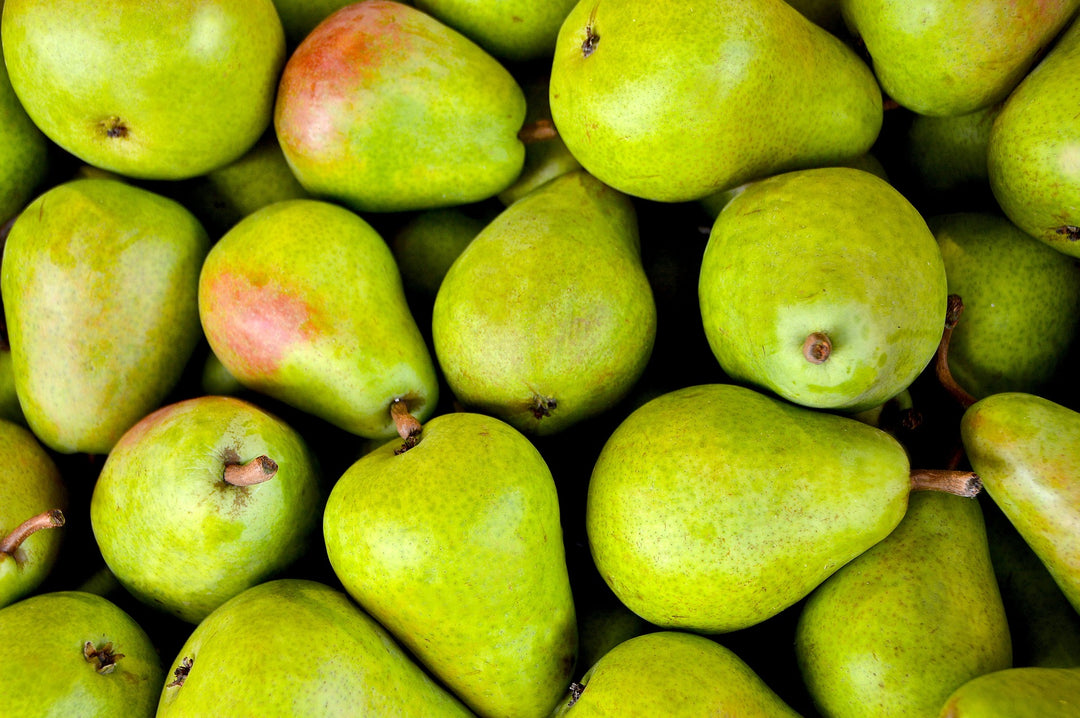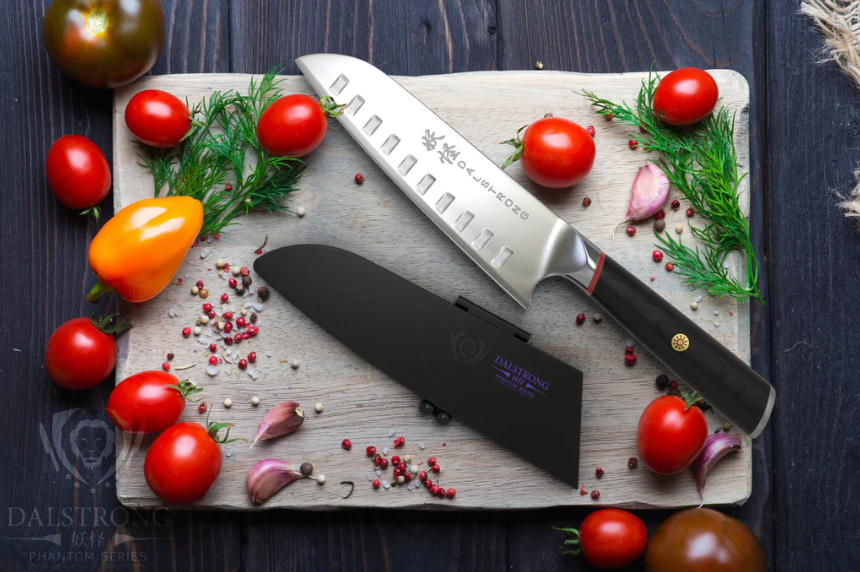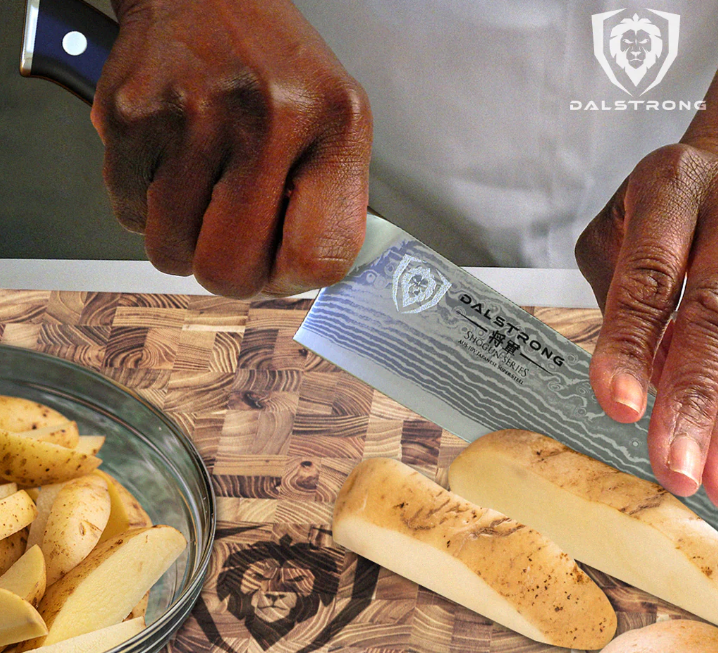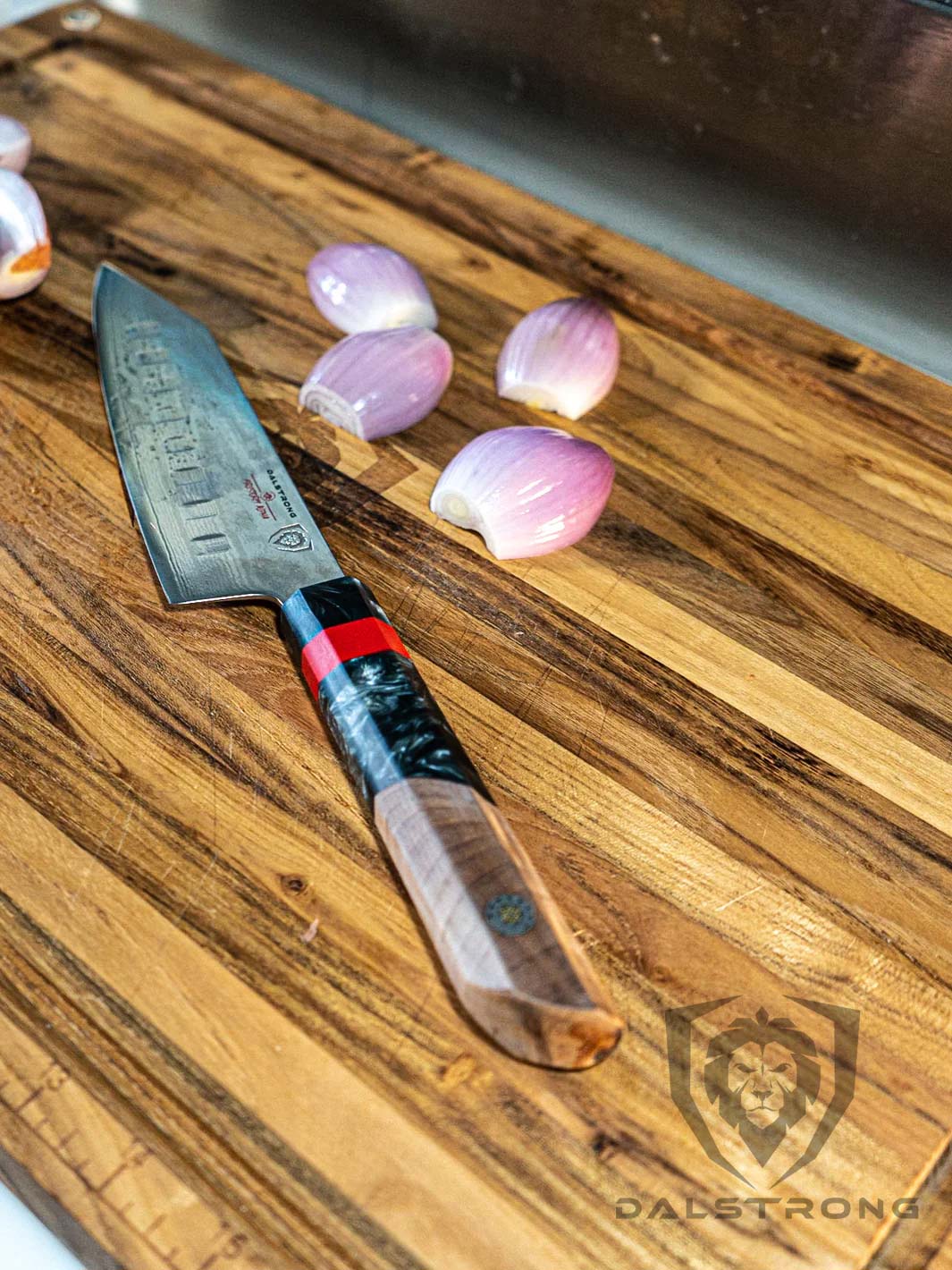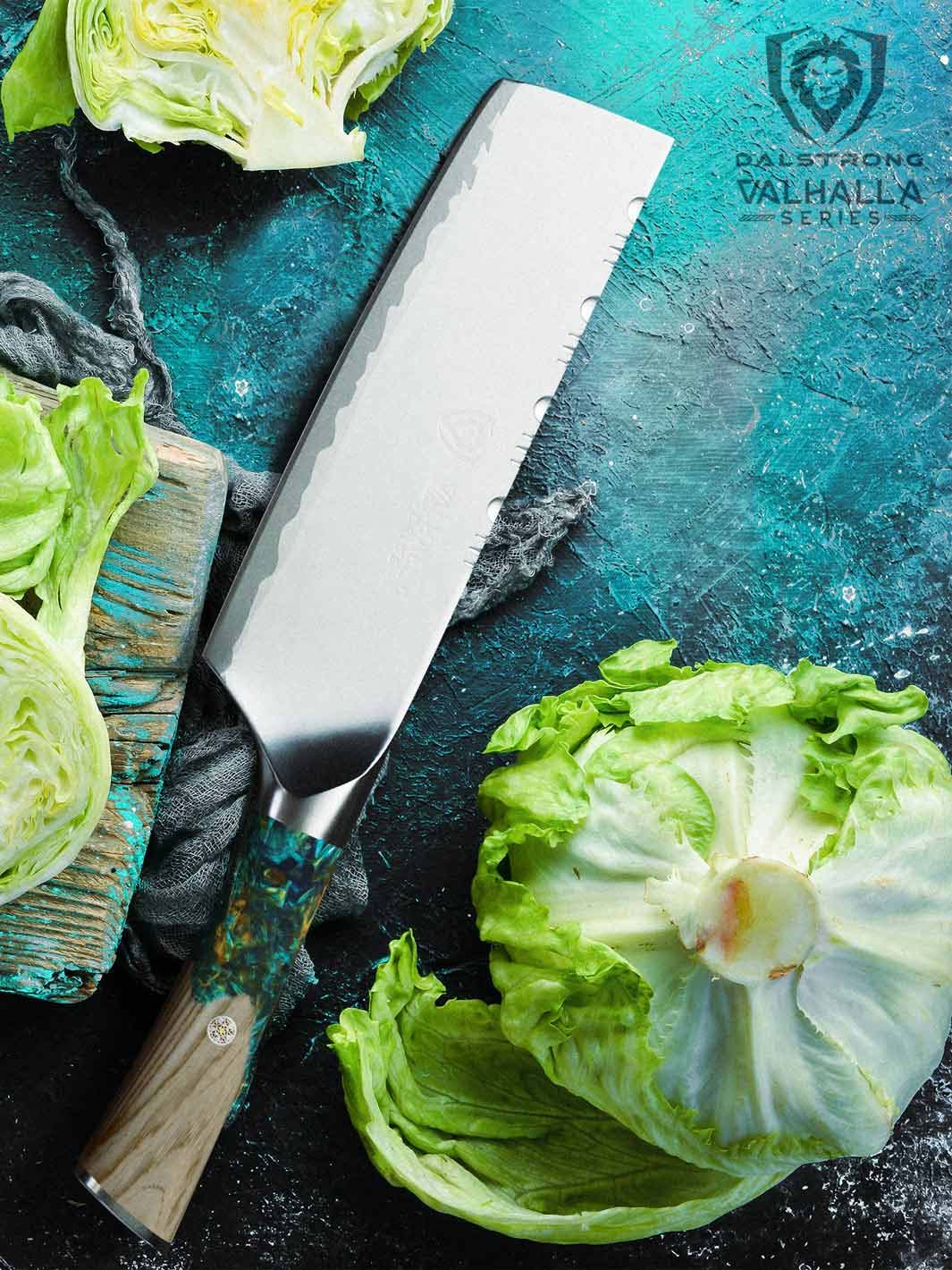Italian Pasta Recipes You Should Try Making At Home
 Food Tongs 12"Scalloped Silicone Tips | Dalstrong
Food Tongs 12"Scalloped Silicone Tips | Dalstrong
Quick Steps Overview: Classic Penne Arrabbiata
- Set up the cooking station
- Start cooking the pasta
- Make the arrabbiata sauce
- Add pasta to the sauce
- Save a cup of pasta water
- Serve the Penne Arrabbiata
Do you want to cook a bowl of deliciousness but don’t know where to start? All you need is some pasta and a bunch of ingredients that are your pantry staples or can be found easily at your local supermarket. Making pasta is no rocket science; if you can boil water, you CAN cook pasta.
No matter what time of the year it is, a perfect plate of pasta is one of life’s simple treasures. From black truffle topped plates of Piemonte to the creaminess of chicken alfredo, every one of Italy’s 20 regions boasts traditional dishes to call their own.
 Food Tongs 12"Stainless Steel Arms & Scalloped Tips | Dalstrong
Food Tongs 12"Stainless Steel Arms & Scalloped Tips | Dalstrong
1. The Beauty of Classic Italian Pasta Recipes
One of my favorite things about cooking pasta is that the shape and sauce pairing options seem to be infinite, each more delicious than the last. Whether you prefer to make your pasta at home or like to try out different shapes like stuffed shell or angel hair pasta, and flavors of pasta, let’s take a look at some authentic pasta recipes to add to your cooking arsenal.
2. Recipe: Classic Penne Arrabbiata
Penne in Italian means feathers, and if you know what a quill pen looks like, you’ll understand why this kind of pasta is named after them. The word “Arrabbiata” means angry and this pasta is rightfully called “angry pasta” because it is spicy and hot.
But don’t be put off by its name because you can make this pasta dish as angry (or spicy) as you like. A little spicy pepper or a lot, either way, this easy pasta recipe makes a delicious meal. Just remember that if you don’t have fresh hot red peppers or can’t find them at your local grocery store, you can use dried pepper flakes. So let’s jump straight to the recipe:
Classic Penne Arrabbiata
Prep Time: 5 Mins
Cook Time: 13 Mins
Total: 18 Mins
Servings: 5
Ingredients List:
- 1 LB Italian Penne Pasta
- 5 tablespoons Extra Virgin Olive Oil
- 3-4 Fresh Garlic cloves
- 1-2 Fresh Cayenne Peppers
- 1 tablespoon Italian Parsley (chopped, fresh or dried)
- 24 oz can Pomodoro San Marzano dell’Agro Sarnese-Nocerino (tomatoes)
- 2 teaspoons Kosher Salt (adjust to taste)
Note: You can also use fresh tomatoes.
Cooking Instructions:
- Set up the cooking station. Gather all the ingredients listed above before you start cooking.
- Start cooking the pasta. Boil a big pot of salted water and start cooking your penne. Remember to keep stirring it whilst making the sauce. Once the pasta is al dente (still a little hard in the middle but NOT crunchy), turn off the heat.
- Make the arrabbiata sauce. In a large saute pan, heat oil over medium heat. Then, add the garlic, cayenne pepper, and chopped parsley. Puree the canned or fresh tomatoes for a smooth sauce. When the garlic starts turning golden, turn up the heat and add the tomatoes and cover with a lid. Continue to cook over high heat, removing the lid once the sauce is simmering. Don’t simmer the sauce too slowly as it needs to cook quickly. Adjust the heat as needed. Add salt. Stir often and taste, adding more salt if necessary. Once the sauce is cooked, thickened, and tastes good, remove from heat and add fresh basil leaves.
- Add pasta to the sauce. With a slotted spoon drain the pasta and add directly to the pan with the arrabbiata sauce.
- Save a cup of pasta water and set it aside before draining the pasta. Then add the pasta to the sauce in the pan. Stir the pasta and sauce together until mixed well.
- Serve the Penne Arrabbiata. While you can serve the pasta on a plate, serving it in a bowl keeps the pasta hotter, for longer. Add chopped parsley and serve. You can also serve it with a side of crusty bread to wipe the plate empty at the end.
3. Other Top Italian Pasta Recipes
Here are some other super simple Classic Italian recipes that you have to try if you are a big fan of authentic Italian food like I am. Buon appetito!
Pesto Alla Genovese (Pesto Pasta)
Ingredients:
- Linguine
- 1 jar of Niasca pesto
- Extra Virgin Olive Oil
- Seal salt (to taste)
- Freshly crushed basil
- Extra virgin Olive oil (for the pesto)
- Pine nuts
- Garlic
- Sea salt
Cooking Instructions:
- Add the basil, sea salt, pine nuts, garlic and olive oil to a blender and blade till you get a nice thick pest sauce.
- Boil 6 quarts of water to boil and add 2-3 tablespoons of salt.
- Place the pesto in the saute pan or a shallow mixing dish and set aside.
- Cook the pasta in the boiling water until almost al dente, and drain, reserving 1 cup of pasta’s cooking water.
- Add the pasta to the pesto in the saute pan or shallow mixing dish but do not place over heat.
- Toss to combine, and add a drizzle of extra virgin olive oil. If needed, add a small amount of the pasta cooking water to thin the pesto.
- When the pasta is completely coated with pesto, place it into a warmed serving dish and serve it with a side of broccoli rabe.
Tagliatelle Alla Bolognese
Ingredients for the Pasta:
- 1 pound egg tagliatelle
- Parmigiano Reggiano cheese (for serving)
- Coarse Sea Salt (for pasta water)
Ingredients for the Sauce:
- 2 tablespoons Unsalted Butter
- 2 tablespoons Extra Virgin Olive Oil
- 1 small Yellow Onion (minced)
- 1 small Carrot (minced)
- 1 rib celery (minced)
- 1 tablespoon Garlic (minced)
- 4 ounces Ground Veal
- 4 ounces Ground Pork
- 4 ounces Ground Beef
- ¼ cup Tomato Paste
- ¼ cup White Wine
- ¼ cup Chicken or Beef Stock
- Fine Sea Salt (to taste)
Cooking Instructions:
To make the Ragu (meat-based sauce):- In a large heavy-bottomed pot over medium heat, melt butter with olive oil.
- Add the onions, stirring frequently, until the onion is translucent, about 5 minutes.
- Add the carrot, celery, and garlic, and cook, stirring frequently until softened and fragrant. This will take about 2 minutes.
- Crumble the veal, pork, and beef into the pot.
- Season with fine sea salt.
- Reduce the heat to low and cook, stirring frequently, until the meat has rendered most of its fat and is just beginning to brown, about 5 minutes.
- Spoon out and discard some of the rendered fat, but leave enough to cover the bottom of the pan.
- Add wine and increase the heat to medium. Cook, stirring occasionally until the wine has evaporated, about 6 minutes.
- Decrease the heat to low, add tomato paste, stir to combine, and cook, stirring frequently for 20 minutes.
- Season to taste with salt and pepper.
- Add the stock and adjust heat if needed to reach a gentle simmer.
- Simmer until the stock has reduced but the sauce is still moist. This will take about 45 minutes.
- Taste the sauce, adjust seasoning, and remove from heat.
- Bring a large pot of water to boil for the pasta. When the water is boiling, salt it with coarse salt and add the pasta. Cook for a few minutes less than the package instructions.
- When the pasta is cooked, drain it, reserving a small amount of pasta cooking water. Transfer immediately to the saucepan and toss vigorously to combine and allow the pasta to cook a final minute in the sauce.
- If needed, add a small amount of pasta cooking water to loosen the sauce.
- Serve immediately with the grated cheese on the side.
Ziti aala Norma (Ziti with roasted eggplant and ricotta cheese)
Ingredients:
- 1 pound Ziti
- 2 large firm Eggplants
- 2 tablespoons of Kosher Salt (plus more to taste)
- 6 tablespoons Extra Virgin Olive Oil
- 2 Garlic cloves (thinly sliced)
- 2 jars of Chunky Eggplant Tomato Sauce
- ¼ teaspoon crushed Red Pepper Flakes (to taste)
- 1 cup freshly grated Parmigiano Reggiano Cheese
- 1 cup fresh Basil Leaves (shredded)
- 8 ounces fresh Ricotta
Cooking Instructions:
- Trim the stems from the eggplants.
- Remove strips of peel about 1 inch wide from the eggplants, leaving about half the peel intact.
- Cut the eggplant into 1-inch cubes, and toss in a large bowl with 2 tablespoons kosher salt. Dump into a colander, and let drain for 1 hour.
- Rinse the eggplant under cool running water, drain thoroughly, and pat dry.
- Preheat the oven to 400 degrees.
- Brush the rimmed baking sheet with half the olive oil. Turn the eggplant cubes onto the baking sheet, toss to coat with oil, and spread them out in an even layer.
- Bake until the eggplant is tender and browned. This should take about 25 minutes.
- Turn and stir the cubes gently once or twice during baking so they cook evenly.
- Bring a large pot of salted water to boil over high heat for the ziti. Heat the remaining olive oil in a large skillet over medium heat.
- Scatter the garlic and cook, shaking the pan, until golden. This will take about 3 minutes.
- Pour in the tomato-eggplant sauce, add the pepper flakes, and season lightly with salt.
- Bring to a boil, then reduce heat and simmer for 10 minutes.
- Stir the ziti into the boiling water. Return to a boil, stirring frequently. When al dente, drain the pasta and return it to the pot over low heat.
- Pour in about half the sauce, tossing lightly to coat the pasta.
- Remove the pot from heat, and stir in ½ cup of grated cheese and basil. Add half of the roasted eggplant and toss, then add the ricotta by heaping teaspoonfuls, stirring it gently into the pasta. Remember that you want the ricotta to warm up but you do not want to blend it with the sauce completely.
- Plate the pasta and spoon the remaining sauce over each serving. Then divide the remaining baked eggplant on top of each pasta plate.
- Sprinkle the remaining cheese and serve the pasta with cauliflower or butternut squash!
4. Tips For Making The Best Italian Pasta
Do not add any oil to the water:
Oil coats the pasta when drained and your pasta will slick away from the sauce. Oil is used when one does not know how to cook pasta or a good sauce or when pasta is of poor quality.
Salt must be added:
But this should be done only when the water has begun to boil. If you add salt before the water starts boiling, it will lose its effect and your pasta will be completely unsalted. If you add salt too late, the salt won’t have time to be absorbed and the pasta, again, will end up completely unsalted. The exact dose is 7 grams of salt per 100 grams of pasta.
Do not run the pasta under cold water:
A lot of people tend to run the pasta under cold water once cooked, but do not do that. Running the pasta under water will result in the starch going away and the pasta is completely unsalted, with a strange texture.
Test the pasta:
Paying attention to the cooking instructions on the package is important but you also need to be sure to taste your pasta to avoid overcooking or undercooking it. Test the pasta 2 minutes before it is ready according to the cooking instructions. Remember, fresh pasta cooks more quickly than dried pasta. Some kinds of pasta like ravioli or gnocchi are cooked when they start floating on the surface.
Conserve a little pasta water:
One of the most important rules of cooking pasta is saving a little bit of the pasta water. In fact, starchy water is essential to bind and thicken the sauce.
5. Dalstrong Tools You Will Need
1. 8 Quart Stock Pot- Avalon Series | Dalstrong
From boiling pasta and tossing pasta salad to searing, browning, sauteing and deep-frying, this stock pot will work tirelessly by your side through it all. Not only does this piece of cookware look stunning, but it is also a very functional tool that is built to last a lifetime.
Pros:
- It boasts premium conductivity that heats 5X better than iron and 20X better than stainless steel.
- This true heavy gauge cookware is ultra-strong, with a 2.5mm thickness that will never dent or warp under prolonged heat.
- The pot is designed to accommodate the chef’s underhand grip while the angled handle ensures a comfortable and secure hold while cooking.
Cons:
- This pot comes with a heavy price tag. If you want a more pocket-friendly option, you can take a look at the other stock pots here.
- The black hammer-finished look of the pot might be too bold for those with a simple and minimalistic sense of style.
2. 12” Saute Frying Pan- Oberon Series | Dalstrong
This highly versatile piece of cookware is the perfect vessel to cook anything, from tomato sauce or cheese sauce for pasta, baking mac and cheese, to cooking a full range of culinary delights like thick proteins and delicate omelets.
Pros:
- It comes with an Eterna nonstick coating that lasts longer than traditional nonstick coatings, making this durable.
- The pan is dishwasher, refrigerator, freezer, and oven safe up to 500 degrees.
- The 12” pan comes with a reasonable price tag, making this a great investment for your home kitchen.
Cons:
- The all-steel handle of the pan tends to get hot on use.
- It might be tricky to store this pan in a compact kitchen.
3. Teak Cutting Board- Medium Size | Dalstrong
Your cooking prep needs a dependable companion and that is why you need this cutting board. This perfectly sized cutting board offers precision for clean cuts of meat, fruits, and vegetables.
Pros:
- The cutting board is designed to look better over time.
- The wood used to make this board is moisture resistant and contains natural oils that make it durable.
- The leased measurement lines on the bottom of the board make precise cuts and sectioning simple.
Cons:
- If you handle prep work in large quantities, you might want to go for a larger board.
- The board does not have handles which can make it difficult to move it around the kitchen.
4. Chef’s Knife 7”- Shogun Series | Dalstrong
More nimble and maneuverable than its larger peers, and more narrow than its shorter counterparts, this knife is no less menacing and effective in the heat of the kitchen.
Pros:
- The blade is known for its scalpel-like sharpness at a staggering 8012 degrees angle per side, making meal prep a breeze.
- It comes with rust-resistant cladding, making it super durable.
- The tapered blade allows minimal slicing resistance and comes with non-stick properties.
Cons:
- The Japanese steel blade might not be everyone's cup of tea. In that case, I suggest you check out our Knife Finder to help you find the perfect knife for you.
- If you are new to cooking you can also go for a shorter blade to start with. Take a look at our chef’s knife collection here.
5. American Legend- Professional Chef’s Apron | Dalstrong
Here’s a lightweight apron that is designed to function smoothly and work hard by your side in the heat of the kitchen.
Pros:
- The apron is made of 100% cotton, making it breathable and comfortable.
- It is equipped with lots of pockets to help you store your tools and personal items.
- The apron is designed to make you feel confident in the kitchen and protect you from unwanted messes.
Cons:
- If you are looking for something that is made of more sturdy material, you can also check this apron out.
- This apron is very basic for a chef with a bold sense of style. In that case, you can take a look at the other aprons available.

















































































































































